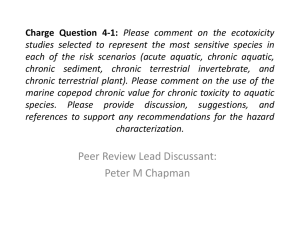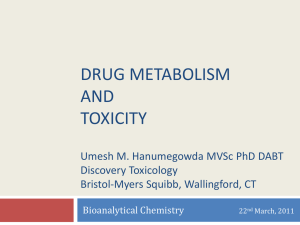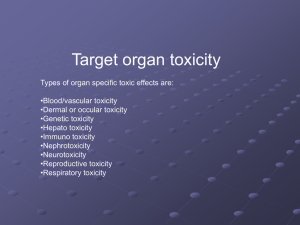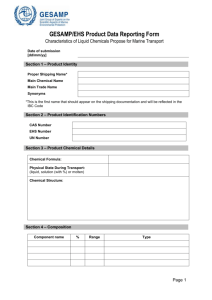Particulates_metals
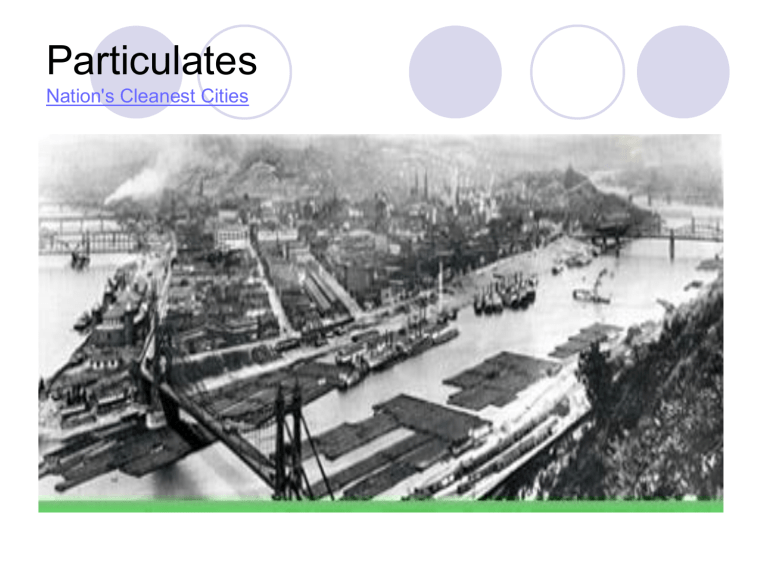
Particulates
Nation's Cleanest Cities
Definitions
Particulate – a particle of solid or liquid matter
Particulate Matter (PM) – A suspension of fine solid or liquid particles in the air
Physical Forms
Dust
Fume
Smoke
Smog
Vapor
Mist
Fog
Aerosol
Fiber
Classification of PM
Coarse particulates – diameter 2.5 -10 µm
(PM
10
)
Fine particles – 0.1 - 2.5 µm (PM
2.5
)
Ultra fine particles – (.001 - .1 µm)
Measurement: µm (micrometers)
A unit of length equal to one thousandth (10 -3 ) of a millimeter or one millionth (10 -6 ) of a meter.
Primary Particulates
Those emitted directly to the atmosphere
Secondary Particulates
Those formed by reactions involving other pollutants
Where Do Particles Come From?
PM
10
What they are
Smoke, dirt, dust from factories, farming, and roads
Mold, spores, and pollen
How they’re made
Crushing and grinding rocks and soil
Then blown by wind
PM
2.5
- Toxic organic compounds
- Heavy metals
Driving automobiles
Burning plants
Smelting and processing metals
Impact of Particle Size
Fine particles vs. coarse (larger) particles
Which are more damaging?
Impacts of Particulate Matter
aggravated asthma
increases in respiratory symptoms like coughing and difficult or painful breathing
chronic bronchitis
decreased lung function
premature death
What Determines Potential Health Effects
From Particulate Exposure?
Length of exposure
Type and toxicity
Concentration
Size of particulates
Activity level and breathing rate
Age and overall health
Individualized Effects
Allergies
Asthmatics
Which particles do you think travel farther?
PM
2.5
PM
10
How far do you think PM
10 travel?
particles can
100 feet
25 miles
500 miles
How far do you think PM
2.5
travel?
particles can
100 feet
25 miles 500 miles
Pneumoconiosis
Reaction of lung tissue to presence of accumulated dust
Symptoms: shortness of breath, wheezing, coughing, difficulty in expectorating
Two common forms of pneumoconiosis are asbestosis and silicosis
Silicosis
Probably the oldest occupational disease
Causative agent is crystalline silica
(respirable)
Some forms of crystalline silica include quartz, cristobalite, and tridymite
Symptoms – dyspnea, unproductive cough
Exception: Acute silicosis
Acceptable exposure
Asbestos
Group of silicates derived from serpentine (crysotile) and amphibole
Fibrous forms include:
Chrysotile, amosite, crocidolite, anthophyllite, actinolite, tremolite
Toxicity theories
Morphology
Metal content
Chemistry
Asbestos – Who is at risk?
Asbestos has been widely used in many industrial products, including cement, brake linings, roof shingles, flooring products, textiles, and insulation.
Exposure common among shipyard workers, people who work in asbestos mines and mills, producers of asbestos products, workers in the heating and construction industries, and other trades people.
If tiny asbestos particles float in the air, especially during the manufacturing process, they may be inhaled or swallowed.
Asbestosis
Definition: Fibrous scarring of the lungs caused by inhalation of fine airborne asbestos fibers
Exposure to asbestos increases the risk of:
Lung cancer
Asbestosis – non-cancerous, chronic lung ailment
Mesothelioma – cancer of the lung lining and stomach lining
Acceptable Exposure - Asbestos
0.1 f/cc
Some Diseases Related to
Asbestos/Silica
Talcosis
Diatomaceous earth
Coal workers pneumoconiosis
Shaver’s disease
Byssinosis
Metals
Representative Metals
DIETARY ESSENTIALS (Ca, Co, Cu, Cr,
Fe, Mg, Mn, Mo, P, K, Se, Na, Zn)
BASIC TOXICITY VARIES highly toxic: Co, Cu, Cr, P, Se carcinogenic: Cr, Co moderately toxic: Mn, Zn low toxicity: Ca, Fe, Mg, Mo, K, Na
==> Pb, Hg, Be, Cd, Cr, Mn, Ni, V, As, Zn
Lead (CFR 1910.1025)
Various forms of industrial interest
Oxides
Carbonates
Sulfates
Sulfide
Chromate
Silicates
Fate in body
Ingestion, skin, inhalation
Lead
Toxic Effects
Gastrointestinal effects (colic)
Palsy
Encephalopathy
Diagnosis
Work history
Medical history
“Lead line”
Weakness in hands/wrist
Blood or urine analysis
Exposure Limit (OSHA): 50 ug/m 3
Mercury
Industries with Hg poisonings
Mining, detonator manufacture, hatter’s trade (mad hatters), thermometers/ barometers, solder, dentist (amalgams), labs
Mercury
Acute toxicity
Gastrointestinal (GI) symptoms
Lesions
Chronic toxicity
Inflammation of mouth
Muscular tremors
Psychic irritability
Beryllium
Uses
Used in alloys with Cu,
MG, Al, Ni, Fe
Used in electronic industry
Acute toxicity
Symptoms of chemical pneumonia
Chronic toxicity
Chronic lung disease
Also liver, kidneys
Cadmium
Uses
Used in alloys
Electroplating of metals
Batteries
Pigment (yellow)
Acute toxicity
3-6 hrs- URT irritation, cough, chest pain, chills
8-24 hrs -Dyspnea, cough, weakness
4-7 days - death
Chronic toxicity
Cadmium line, pulmonary damage, anosmia, kidney damage, cancer potential
Chromium
Uses
Electroplating (auto and electrical equipment)
Alloying w/ Fe & Ni (stainless steels)
“Hexavalent”
Acute toxicity
Irritation of respiratory system, sneezing, runny nose, sensitization
Chronic toxicity
Chrome ulceration
Dermatitis
Ulceration of nasal septum
Increased cancer risk
Manganese
Uses
Used in iron and steel industry
Used some in chemical and battery industries
Two forms of poisoning
Pulmonary
Nervous system
1st phase: anorexia, vision, behavior changes, unsteady
2nd phase: voice, facial, movement
3rd phase: muscle rigidity, progressive
Nickel
Uses
Stainless steel industry, electroplating, surgical and dental equipment, coinage
ACUTE TOXICITY
due to “carbonyl”
can be fatal
CHRONIC
dermatitis, sensitizer
chemical pneumonia
lung cancer
Vanadium
Uses
Steel, crude oil
Pentoxide
Acute/chronic toxicities are similar
Symptoms
sore throat, lacrimation, cough, pneumonia, green colored tongue
Arsenic
Uses
Insecticides, wood preservative, glass manufacturing
Acute toxicity
irritation, swallowing difficulties, cyanosis and collapse
Chronic toxicity
G.I. complaints, loss of strength, ulcers, loss of hair, cancer
Zinc
Uses
Galvanizing (tool, automotive, transportation industries)
Zinc chloride
Zinc chromate
Zinc oxide
most prolific cause of
“metal fume fever”
similar to flu
blue gum line “Burton line”
usually short-lived
(Photos courtesy of J. Lewis)
Zinc oxide fume
Zinc oxide fume
Summary of Metal Toxicities
dietary essentials
sensitizers
carbonyls
metal fume fever
Burton lines
mental effects
carcinogens
bad odors
oddities
